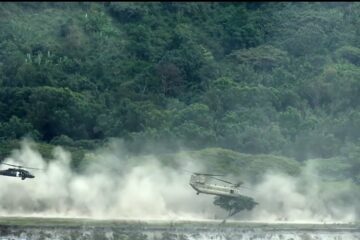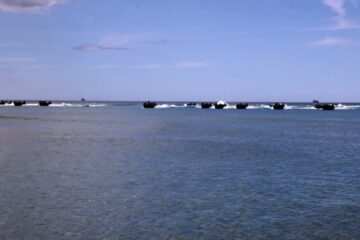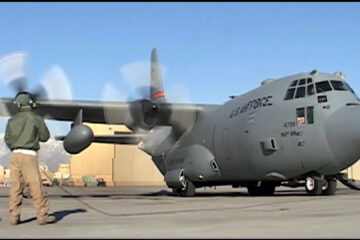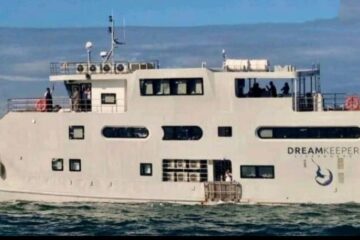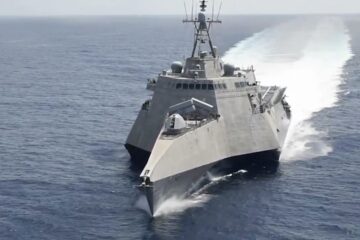All activities under the Armed Forces of the Philippines Joint Exercise DAGIT-PA is scheduled to formally conclude on the 1st week of December. The operations include Amphibious Landing and Island Defense, and Combined Arms Live-Fire Exercises were done in different Northern Luzon Command areas.
The drills are part of the 4th iteration of Armed Forces of the Philippines Joint Exercise (AJEX) DAGIT-PA, which focuses on capabilities development in maritime security and amphibious operations. The events aim to carry out joint operations integrating maritime, air conventional forces, and land forces on cooperative operational environments. The scenarios manipulate participating troops to conduct joint fires with close air support and aviation attack, joint land and sea movement and maneuver, and joint force protection.

Image by: Northern Luzon Command
The Armed Forces Northern Luzon Command also successfully completed the Staff Exercise of the Armed Forces of the Philippines comprehensive Joint Exercise on Wednesday in Tarlac City. According to the military, this year’s joint exercise’s theme turns around Territorial Defense and Internal Security Operations.
The drill is a series of planning exercises that aim to capacitate the battle staff and subordinate unit Commanders to plan for joint operations to enhance interoperability between and among the different major services and ensure that the ever limited human resource and firepower will be optimized to accomplish the mission.
Lectures on International Rules of Engagement, Hybrid Warfare, Mission Analysis, and Wargaming were launched during the course, all of which intend to advance joint military operations in sustaining a high level of readiness and responsiveness on Northern Luzon Command in its various mission areas.
Philippine Military Challenge vs. Chinese Research Intrusion Revealed
In September, Armed Forces of the Philippines Northern Luzon Command chief Lieutenant General said the research vessel was monitored 109 kilometers with 1 knot, nearly motionless in the Western Part of Calayan Island in Cagayan province.
Burgos said the Philippine military deployed a naval aircraft to question the Chinese vessel within its 200-mile exclusive economic zone. Another Philippine ship was also sent a day after to check on the Chinese vessel.

Despite this, Burgos said the government will still be filing a diplomatic protest since the vessel should have asked for permission first if they needed to enter Philippine territory. He also said they have already submitted a report to the Department of Foreign Affairs detailing the Chinese intrusion.
The monitoring and challenge of that vessel do not end there. The military submitted a special report to the task force. Then the Department of Foreign affairs would file a diplomatic protest,” he added.
The vessel’s builder, Guangzhou Shipyard International, described the Jiageng as one of Beijing’s top research ships. Built-in 2017, it is 77.7 meters long and capable of carrying more than 50 people. It has a maximum speed exceeding 14 knots.
Expert says China Research Vessels in PH waters Used for Naval Power Buildup
In October, a maritime expert said the Philippines should be suspicious of Chinese research vessels operating in its waters because of such an appearance for naval power buildup. It is a means of power projection director of the University of the Philippines Institute for Maritime Affairs and Law of the Sea, at an online forum hosted by The Maritime League.
China has publicly acknowledged the development of marine technology and the conduct of marine scientific research to safeguard the sovereignty and create an atmosphere of maritime power. That should be of concern to us, concerning their marine scientific research activities in the West Philippine Sea,” he said.
The Philippine government has been expressed against the deployment of Chinese warships and militia in the Philippine Exclusive Economic Zone, especially the West Philippine Sea. Publicized protests against Chinese research vessels, however, are not as frequent.
British Navy Will Dispatch its Aircraft Carrier in the East China Sea
Meanwhile, the British navy will dispatch an aircraft carrier strike group to waters near Japan as soon as early next year. Japanese government sources said Saturday, in a rare development that comes amid China’s growing maritime assertiveness in the region.
The group, including the aircraft carrier Queen Elizabeth, is expected to conduct joint exercises with the U.S. military and Japan’s Self-Defense Forces during its stay in areas including off the Nansei Islands chain in southwestern Japan.
During the dispatch, the British navy plan to conduct maintenance on carrier-based F-35B stealth fighter jets at Mitsubishi Heavy Industries Ltd.’s aerospace systems works Aichi Prefecture, central Japan, the sources said.
According to the Royal Navy, the carrier, commissioned in 2017, is the largest and most powerful vessel ever constructed for the British navy, weighing 65,000 tons and measuring 280 meters in length.
Qatar Send Relief Goods using the C-17 Globemaster
Upon Qatar’s Highness directives, an Amiri Air Force C-17 Globemaster military transport aircraft carrying relief goods arrived 1st week of December at the Ninoy Aquino International Airport (NAIA) to extend help to the victims of Typhoon Ulysses that hit the Philippines recently.

The relief goods include 40 tons of food and non-food products, in addition to camping equipment such as tents, water, sanitation, electricity generators, and rescue boats.
The relief goods were transported to Manila through the Qatar Fund for Development, in cooperation with the Amiri Air Force. Qatar Red Crescent’s distribution of aid will be carried out in coordination with the Philippine Red Cross. At the same time, the Qatar Charity will focus on the distribution of food baskets.



